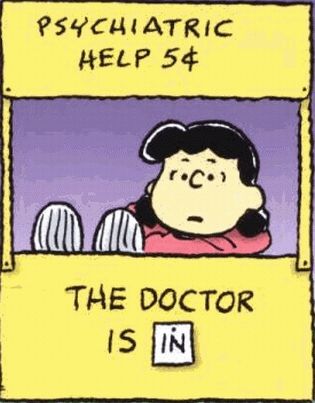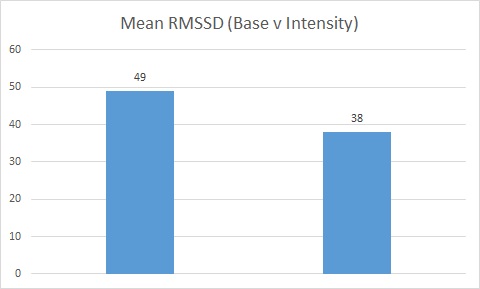Exercise as therapy
Alan Couzens, M.S. (Sports Science)
May 13th, 2015

One of the less considered (and less talked about) aspects of endurance sports is the use of training/exercise as psychological therapy. History is littered with top level athletes who began their athletic journey by literally “running away from” psychological demons, be they internal or external.
This drive towards endurance exercise as an outlet has powerful neurochemical roots. In the right dose, endurance exercise can significantly increase serotonin levels and boost vagal tone – something that studies have shown to be consistently low in the chronically depressed (e.g. Rechlin et al., 1994)
A slightly different ‘dose’ can significantly decrease levels of circulating cortisol & the anxiety that comes with an over-excited sympathetic nervous system – a measure shown to be high in those with anxiety and panic disorders (e.g. Gorman & Sloan, 2000)
However, like all chemical interventions, get the dose wrong & the potential exists for misuse leading to exercise addiction….
I was seriously grumpy and a little generally bummed out over the last week. My heart rate variability was ‘tanking’. Well, actually, when I look at it, while it was tanking by my standards, it was actually smack bang on the average values (30-35ms) for guys my age! This got me thinking… Is this how regular 'guys my age' feel on a day to day basis?” If so, it’s no wonder that such a large percentage of the middle-aged population is on meds!
Yes, used properly, exercise can literally help to keep you sane, especially during those periods of development that are known for altered mental/hormonal states - e.g. middle age. However, used improperly, it can take you to some very dark places.
There are 2 specific 'dosing errors' that can actually lead to diminished vagal tone and the depressive tendencies it brings….
- Excessive intensity
- Extreme volume
For me, it was a small bump in the intensity of my program that resulted in my large drop in HRV & shift in mood. I’m talking about an increase from an average intensity factor of 0.7 to an average intensity factor of 0.73 – hardly ‘turning it up to 11’ :-) and yet, that small shift in intensity, dropped my mean RMSSD for the block down by 11ms! This difference shown in the chart below...

It’s all a question of balance. When intensity rises, the amount of unstructured easy stuff that you do has to also rise so that your system can deal with that. When these are out of balance, the system takes a hit.
Intensity neuro-chemically manifests as a (literal) stimulant! You want to get ‘jacked’? Get together with your buddies for a flat out group ride. It will take you the whole day to “come down”. For the same reason, it’s a mistake for an athlete to bust out intervals late in the day. It’s like taking shots of Java before bed. Not conducive with a great sleep!
The problem is, this stuff feels good (at least for a while). It’s enjoyable… but not sustainable.
As sympathetic drive goes up, parasympathetic strength goes down and it’s not too long before this delta turns your euphoria into a general sense of being pissed off, jacked up and irritated. What does any good (exercise) addict do when this happens? He heads back to that one thing that made them feel great in the past – further reinforcing this cycle & further widening that gap between sympathetic and parasympathetic systems.
A similar pattern can occur during extended periods of extreme volume…
As an introvert, I can relate to this one….When life takes a turn for the worse, the ‘go to’ strategy – grab the bike and head to the mountains for some big volume. That’ll take your mind off it!
It can be effective, too! Gordo gets a real kick out of the 'fatigue intoxication' that comes with big training. It's a real phenomena, and a blissful one at that!
However, while volume is, on the whole a safer ‘coping mechanism’ because it equally taxes sympathetic and parasympathetic systems. There is one key ‘watch out’ - Generally the sympathetic system recovers first. The standard training camp pattern is thus…
Day 3 – “Coach, I feel surprisingly good. I’m super happy with how I’m handling the volume”
Day 5 – “Coach, I know we planned to meet up and chat but I need a nap..”
Day 8 – “I actually feel OK. I think I can keep this rolling…”
Needless to say, we cap most of our training camps at 7 days :-)
Or, put in the context of HRV numbers……

i.e. the sympathetic system (blue line) begins to recover before the parasympathetic system – the athlete recovers the ability to ‘do work’ before recovering their ability to 'switch off' and recover from work. They have the energy to keep things rolling but that usual training ‘bliss’ that comes from having a high vagal tone is gone. You repeat this a few times and that parasympathetic floor gets lower and lower each time. Eventually, you find yourself agitated, sleep deprived, apathetic & in a physical and emotional hole that’s tough to get out of!
When an athlete is going through a tough time & using big training as an escape, that desire to ‘keep things rolling’ through days 8,9,10,14,21…(to put off dealing with whatever they may be avoiding) is especially strong. While understandable, this strategy can backfire and actually compound the depression that led them to want to escape in the first place!
So, what’s the flipside of this? How can we effectively use exercise to help us deal with other stressors in life and to promote balanced neurochemistry and overall psychological health?
- Be very careful with intensity & always increase the amount of easy, unstructured enjoyable training that you do in proportion to the additional stress of tough, structured training (& in proportion to higher levels of non-training stress).
- Be aware that your brain can trick you into believing that you’re ready for more before you truly are ready for more. This trick was important to short term survival but ultimately compromises long term growth. When you feel 'ready to go' after a tough block, wait a few more days.
- Bringing the above 2 points together – in the wise words of the G-man: “moderation leads to consistency” (which also leads to stable neurochemistry).
- I’ve said it before, I’ll say it again – get to know your own body via long term HRV monitoring & use this information to make decisions that will not only make you faster but also promote long term health.
Overall, endurance athletes can expect to have significantly higher vagal tone and significantly better overall mood profiles than their sedentary counterparts. This is especially true for those in their 30’s and 40’s. Used right, exercise truly is powerful medicine in more ways than one. Dose right and…
Train smart,
AC.
Tweet**************************
Don't miss a post! Sign up for my mailing list to get notified of all new content.
**************************
